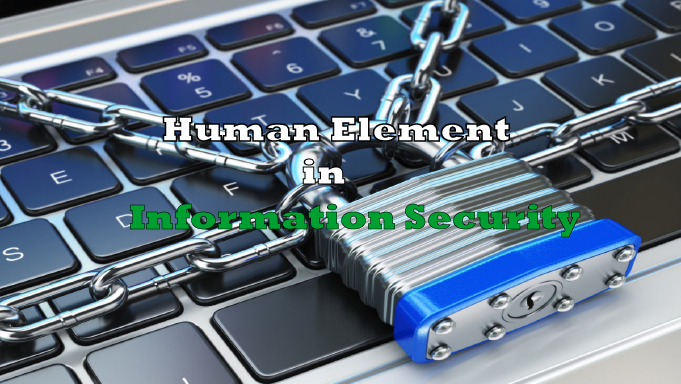Human Element in Information Security

Recently, I completed a course on the Human Element in Information Security, and it opened my eyes to the importance of individual responsibility when it comes to keeping ourselves secure in the digital world. While organizational policies and procedures are crucial, it is equally important for individuals to take steps to protect their own information. In today's technology-driven world, people of all ages need to be aware of the potential risks and how to reduce them. This blog post aims to shed light on the significance of protecting individuals and their data security, with a particular focus on the use of social media platforms.
Understanding the Human Element
In information security, the "human element" essentially refers to the measures that individuals can take to protect their digital data and devices. The human aspect in cybersecurity is becoming more and more significant as more people use digital devices and are online. Because the consequences of ignorance can be so severe, it is crucial to protect our digital information and infrastructure. Let's take a look at the story of Sarah.
Sarah was a frequent social media user who enjoyed sharing her life updates with friends and family. One day, she received an alarming SMS from an unknown sender threatening to expose her private photos if she didn't pay a hefty ransom. Shocked and frightened, she realized that her social media accounts had been compromised, leading to a violation of her privacy. Sarah learned the hard way about the importance of regularly reviewing and updating privacy settings on social media platforms. Her story serves as a reminder to all of us to be mindful of the information we share and the security settings we put in place. Here are some best practices for different age groups in protecting their data:
Children and Teenagers
- Educate children on the importance of strong passwords and to never share them with anyone, even friends.
- Teach them to be wary of unsolicited emails or messages and to never click on links or download attachments from unknown sources.
- Monitor their online activity and set parental controls to limit access to inappropriate content.
Adults
- Use strong, unique passwords for each account and enable two-factor authentication whenever possible.
- Be cautious of phishing emails that appear to be from legitimate sources. Verify the sender's email address and hover over links to check their authenticity.
- Update software regularly to ensure that security patches are in place.
- Avoid using public Wi-Fi networks when accessing sensitive information.
Seniors
- Be aware of scams targeting seniors, such as phone calls or emails claiming to be from a grandchild or any other family member.
- Use caution when giving out personal information over the phone or online.
- Consider using a password manager to help with remembering passwords.
The Power of Awareness
Regardless of age, everyone should be aware of these best practices to keep their personal information secure. By taking responsibility for our own security, we can help protect ourselves and others from potential harm. Individuals who are aware of potential information security risks are better equipped to identify them. The ability to recognize risks and take the necessary precautions, from using weak passwords to phishing emails, depends on understanding typical vulnerabilities.
It is important to note that even with the best practices in place, incidents may still occur due to ignorance of our digital lives. An example is the Cambridge Analytica scandal where data from millions of Facebook users was harvested without their consent. This serves as a reminder that we need to be cautious of the data we share online and the permissions we grant to third-party applications.
The incident was a huge setback in the field of data privacy and security since the data was used by political campaigns to influence voters in several countries. It is important to note that most of the Facebook users whose data was harvested were not aware of the implications of the third-party applications they were using.
This and other incidents show that the risks to our personal information are real and that everyone should be vigilant when it comes to information security. In the case of Cambridge Analytica, it was later found that the data was obtained through quizzes and personality tests posted on the platform. These quizzes promised to tell users more about their personality, but in the process, they also collected data on their friends and contacts on the platform.
To help prevent such incidents, it is essential to collect data from social media platforms to see what is happening on our accounts. This data can help us identify potential security threats and take appropriate action. For example, if we see that our account has been accessed from an unfamiliar location, we can change our password and enable two-factor authentication.
Collecting data from social media platforms is also important since it can help us understand how our personal information is being used. For instance, most social media platforms use our data to target ads to us. By collecting data on our social media accounts, we can see what data is being collected, how it's being used, and whether we need to adjust our privacy settings.
Conclusion
In conclusion, understanding the human element in information security is crucial for individuals seeking to safeguard their personal data. By taking responsibility for our own security and staying informed about the latest threats, we can help protect ourselves and others from potential harm. It is essential to collect data from social media platforms to identify potential security threats and take appropriate action. Remember, prevention is better than cure.